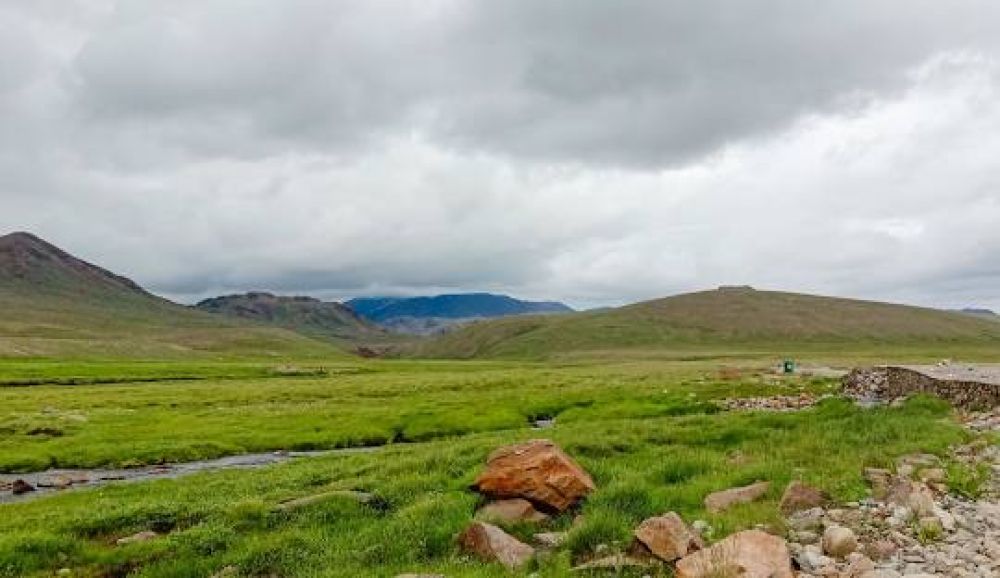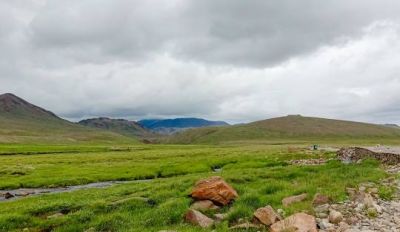

Deosai National Park, located on the boundary of the Skardu District in Pakistan, is an intriguing destination for wildlife enthusiasts and photographers. Known as the Land of Giants, it is situated on the Deosai Plains, the second highest plateau in the world. The park is home to a diverse range of flora and fauna, including the Himalayan ibex, Tibetan blue bear, red fox, golden marmot, and over 124 resident and migratory bird species. Wildlife photography in Deosai offers a unique opportunity to capture the raw beauty of these species and their natural habitat in the vast, unspoiled landscapes. The rolling grasslands, wildflowers in bloom, and the backdrop of snow-capped mountains create a perfect canvas for photographers. During the summer months, when the park is accessible, enthusiasts can spend hours or even days exploring different regions, always finding new perspectives and moments to capture.
Deosai National Park provides a surreal camping experience under the clear, unpolluted night skies of Skardu. As night falls over the Deosai Plains, campers can gaze upon an unobstructed view of the Milky Way, making for an incredible stargazing experience. The park's altitude and isolation from urban light pollution mean the stars and constellations are seen in stunning clarity and brilliance. Camping trips in Deosai can be tailored to include guided treks during the day across the park's diverse landscapes, which are covered in wildflowers during the short summer. The experience is both tranquil and adventurous, as the park is known for its unpredictable weather, which can add an element of excitement to the camping adventure. Be sure to pack warm clothing and a high-quality tent to withstand the high-altitude conditions.
Deosai National Park is an angler's dream with its clean, cold rivers and lakes, especially the Bara Pani and Sheosar Lake, which are known for their abundance of trout. Trout fishing in Deosai offers a peaceful retreat for those looking to escape the bustle of daily life and immerse themselves in nature. Sheosar Lake, in particular, is a picturesque spot for fishing with its crystal-clear waters reflecting the surrounding snow-covered peaks. Anglers can expect to catch both brown and rainbow trout, which thrive in the glacial waters of the region. The best time for trout fishing is from late June to early October when the park is accessible. Visitors should be aware that they need a permit to fish in the park, and there may be restrictions on the number and size of fish that can be caught to ensure sustainable practices.
Hiking to Sheosar Lake in Deosai National Park is a must-do for any nature lover. The park features a variety of hiking trails suitable for various skill levels, but the trek to Sheosar Lake is particularly popular for its awe-inspiring vistas. The lake itself sits at an elevation of 4,142 meters, surrounded by the majestic peaks of the Himalayas and Karakoram ranges. The journey traditionally starts from Deosai top, winding through a plethora of wildflowers and grasslands, and offers a chance to spot wildlife like the Himalayan marmot or Steppe eagles. The hike to Sheosar Lake encapsulates the essence of Deosai's scenic beauty, with the final destination providing a tranquil setting to relax and take in the spectacular views. The crisp mountain air and the serene environment make the trek both rejuvenating and soulful. To preserve the delicate ecosystem, it's recommended to stick to marked paths and leave no trace of your visit.
Exploring the rugged terrain of Deosai National Park in a 4x4 jeep is an exhilarating way to witness the vast beauty of this high-altitude plateau. The jeep safari offers a blend of adventure and convenience, allowing travelers to cover more ground than is possible on foot and to reach the most remote corners of the park. The journey typically begins from Skardu and takes adventurers across the park, through roaring rivers, scenic valleys, and vast stretches of wildflowers, providing plenty of opportunities for wildlife sightings and photography. A stop at the picturesque Sheosar Lake is a highlight of the safari, offering a moment of tranquility amidst the thrill of the bumpy ride. The jeep safari in Deosai is usually organized by local tour operators and includes a driver who is well-versed with the challenging terrain and can ensure a safe, memorable experience.
Bara Pani, translating to 'Big Water,' is a serene river in the heart of Deosai National Park known for its captivating beauty and idyllic picnic spots along its banks. Picnicking at Bara Pani is a relaxing way to appreciate the natural splendor of Deosai. Families, friends, and solo travelers can enjoy a leisurely day surrounded by the park’s vast grasslands, framed by distant snow-capped peaks. It's an ideal spot to unwind and indulge in homemade or pre-arranged picnic meals while soaking in the tranquil atmosphere. The soothing sound of the flowing water and the panoramic views of the surrounding landscape create a perfect setting for a laid-back day reconnecting with nature. Remember to pack out everything you brought in to maintain the cleanliness and purity of this pristine environment.
Mountain biking across the Deosai Plains offers a unique and invigorating way to experience the vast beauty of the national park. Cyclists can traverse the flat stretches of the park, enjoying a relatively easy ride on the world’s second highest plateau. The activity suits both beginner and experienced mountain bikers, with the terrains offering something for everyone. The raw, untouched landscapes of Deosai provide a surreal backdrop as bikers wind their way through fields of wildflowers and past the stunning natural formations. It's a sustainable way to explore the park while maintaining a low impact on the sensitive ecosystems. Biking in Deosai also allows for a unique perspective on the local flora and fauna, with chances to observe wildlife in their natural habitat. Prepare for this activity by bringing a reliable mountain bike, safety gear, and enough provisions for your journey.
Deosai National Park is a haven for birdwatchers, offering sightings of a variety of avian species in a picturesque high-altitude setting. The park serves as a sanctuary for resident birds and a stopping point for migratory species, making it an attractive destination for ornithological studies and bird watching activities. Bird watchers can explore the diverse habitats that host birds like the serene lakes, rolling grasslands, and rocky cliffs. Sightings may include raptors such as golden eagles, bearded vultures, and the peregrine falcon, along with smaller species like snowcocks, warblers, and larks that dot the landscape of Deosai. The best times for a bird-watching expedition are the early mornings or late afternoons when birds are most active. If you're interested in bird watching, bring binoculars, a field guide, and dress appropriately for the weather conditions of this high-altitude terrain.
Botanical enthusiasts will find Deosai National Park to be a rich field for exploration with its unique alpine flora. The plateau becomes a carpet of flowers during the brief summer season, showcasing an array of colors with species like the blue poppy, edelweiss, and wild thyme. Botanical exploration in Deosai offers insight into the resilient plant species that thrive in the challenging conditions of high altitude, extreme temperatures, and a short growing season. These plants are not only beautiful to observe but are also of interest for their adaptability and potential use in local herbal medicine practices. Visitors exploring the botanical diversity of Deosai should be mindful to not disturb or remove any vegetation, as the ecosystem is fragile and the plants have a crucial role in maintaining it. On such excursions, it's advisable to go with a knowledgeable guide who can provide detailed information about the various species encountered.
In the summer months, nomadic tribes move their herds across the Deosai Plains, and visitors to Deosai National Park have the rare opportunity to interact with these tribes and learn about their traditional way of life. The nomads are a testament to human adaptability, as they follow ancient routes and maintain a lifestyle that has been practiced in the region for centuries. Interaction with these tribes allows tourists to understand the cultural heritage of the local people, their connection to the land, and how they sustain their livelihoods in such a remote environment. Experiencing their warm hospitality and observing their daily routines, such as setting up camps, herding livestock, and crafting traditional garments, can provide invaluable cultural insights. It's essential to respect their customs and privacy while engaging with the nomads, and visitors should always ask before taking photographs or entering their temporary dwellings.
